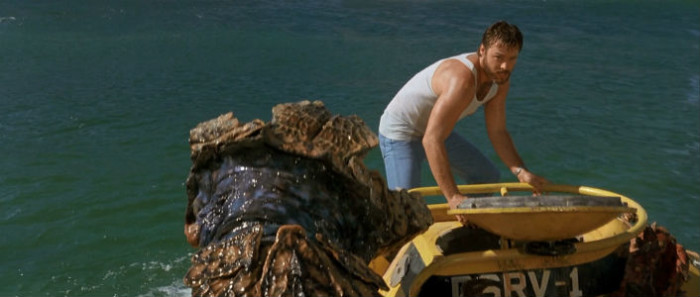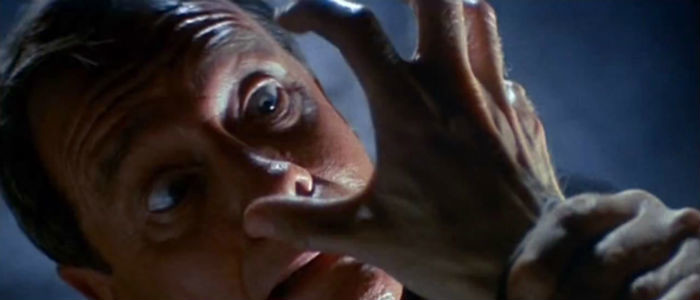Seeing Double: 'DeepStar Six' Vs. 'Leviathan' In A Battle Of The 1989 Sea Monster Movies
(Welcome to Seeing Double, a series where two strangely similar films released around the same time are put head-to-head. This time: we flash back to 1989, when undersea creatures attacked in both DeepStar Six and Leviathan!)
This month's face-off comes with a creature feature theme in honor of Halloween and we're pitting two underwater monster movies against each other. DeepStar Six and Leviathan came out two months apart back in early 1989, and while neither rocked pop culture, both have their die-hard fans to this day. And a quick note: James Cameron's The Abyss is often lumped together with these two as it also came out in '89 and features underwater riggers encountering an unknown life form, but it doesn't really belong in this particular conversation. For one thing, the characters aren't being attacked by a monster, and for another, it would obviously trounce every category.
The Story
DeepStar Six follows a group of underwater rig workers and divers working alongside the US Navy to build and install a nuclear launch pad on the ocean's floor. The mission has lasted longer than expected and the crew is missing the sun and fresh air above, and at least one of them is getting close to cracking under the pressure. Tensions increase dramatically when an unidentified underwater creature targets them for dinner.Leviathan sees an underwater mining crew winding down their mission and counting down the last few days before they get to return to the surface. Things derail, though, when one of the divers discovers a sunken Soviet ship and wanders inside in search of booty. A flask catches his eye and tongue, and while the others examine the captain's log and documents on deceased sailors, he ingests some vodka that's unfortunately tainted with a deadly surprise. Soon the crew members are dissolving and mutating as all hell breaks loose beneath the sea's surface.Advantage: Neither story is all that fresh and original, but while one film simply introduces a monster, the other adds some degree of plot and conspiracy behind the carnage. Advantage, Leviathan.
Filmmakers
Sean S. Cunningham toiled a bit in the '70s, directing movies no one's seen, but he finally burst onto the scene in a big way in 1980 with a little movie called Friday the 13th. It was a huge success at the box-office and spawned numerous sequels, but instead of directing further installments he struck out in different directions – and mostly struck out in general. He had a minor hit with 1983's sex comedy, Spring Break, but after a couple suspense movies tanked, he decided it was time to make a full return to horror with DeepStar Six. His stated goal as producer was to be the first of several similarly-themed underwater pictures to hit screens, and when Robert Harmon (The Hitcher) exited the director's chair, Cunningham slipped in to keep things moving quickly. This was screenwriter Geof Miller's first produced script.
The late George P. Cosmatos, by contrast, came to his creature feature in the middle of a minor hot streak. Rambo: First Blood Part II had raked in $300 million worldwide, and Cobra was a modest hit a year later. Similarly, co-writers Jeb Stuart (Die Hard) and David Webb Peoples (Blade Runner) were big genre talents. None of them were household names necessarily, but people were seeing their movies, and Hollywood took note.
Advantage: DeepStar Six enjoyed a bump in the press because of Cunnigham's "return to horror," but Leviathan's filmmaking team carried a lot more weight with Hollywood (and whether they connected the dots or not, with audiences too).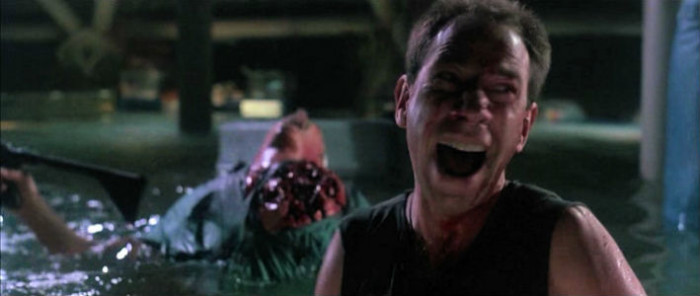
Cast
There are plenty of recognizable faces in DeepStar Six, but you'd be hard-pressed to call any of them movie stars. Instead, most of them were most familiar at the time to television audiences including Greg Evigan (B.J. and the Bear), Nia Peeples (Fame), Taurean Blacque (Hill Street Blues), and Cindy Pickett (St. Elsewhere). On the other hand, though, the eternally terrific and masterfully prickish Miguel Ferrer is also a member of the crew here, and his power can't be understated.
Leviathan stepped up the casting game a bit by featuring faces (and talents) recognizable from multiplexes across the country, with Peter Weller and Richard Crenna leading the pack. Weller was big from RoboCop (and had previously faced a monster alongside director Cosmatos in Of Unknown Origin), Ernie Hudson was a Ghostbuster, and Daniel Stern was already a memorable supporting actor from hits as varied as Blue Thunder and Hannah and Her Sisters. You also couldn't go wrong with Lisa Eilbacher, Amanda Pays, Meg Foster, and Hector Elizondo.Advantage: Both movies are ensemble affairs, but Leviathan takes the lead here with bigger, more familiar names.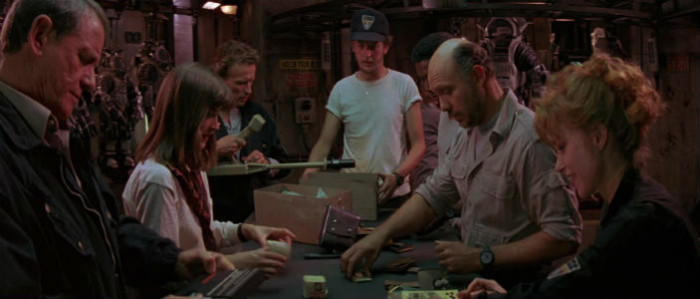
Critical Reception
Rotten Tomatoes wasn't around back in 1989, but their current RT scores are very similar. DeepStar Six has a 0% RT with a 22% audience score, and Leviathan sits at 17% RT with 25% from the audience. The New York Times' Janet Maslin disliked both, but gave the edge to Leviathan by saying it "compares favorably with the other recent aquatic horror film Deepstar Six but probably not with anything else." Not exactly a glowing recommendation. Gene Siskel, meanwhile, only appreciated Leviathan for Amanda Pays' shoulders.
Advantage: Neither film was all that appreciated critically at the time, and current RT scores are close enough to call this one a draw.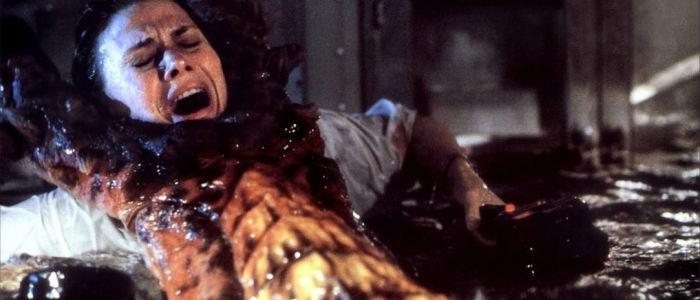
Budget and Box-Office
DeepStar Six cost $8 million and earned $8 million at the domestic box-office. While it made back its production budget, it fell short in recouping marketing costs (generally assumed to be equal to half the budget). The lower budget is evident onscreen both in the cast – not a knock, as some of them are great talents, but let's face it, they were inexpensive – and the production design, which relies on a lot of generic flashing lights and exhaust tubing shooting occasional bursts of steam. The monster is a big puppet resembling a sea-faring graboid from Tremors at times, and it looks perfectly acceptable for a B-grade horror movie.Leviathan earned twice what DeepStar Six did, but that's not an automatic win here as it also cost three times as much to produce. It's all onscreen, and it looks a whole lot better than its competition with some impressive sets, elaborate creature designs from Stan Winston – although Ernie Hudson still feels the big creature looks like a giant chicken – and simulated sea floors. The "underwater" walking scenes were done on a dry stage with tiny feathers floating through the air. Adding in another $12 million for marketing means the film needed $37 million to break even. It fell short there by a hefty – especially in the late '80s – $20 million.Advantage: Neither was a hit, but DeepStar Six lost far less money meaning it finally wins a category.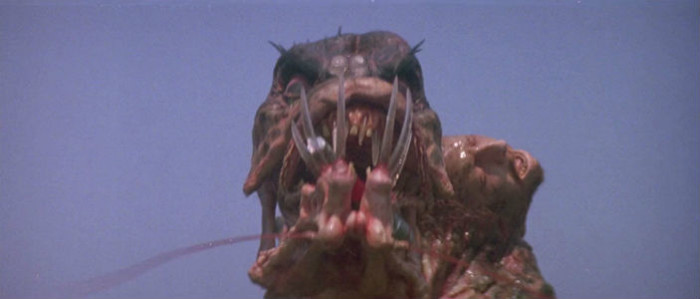
My Take
The two films are plenty similar and equally effective as minor creature features, but they approach that goal differently due both to talents and budgets. DeepStar Six eases into its plot through time spent with character introductions and relationships. It's a full 30 minutes before the creature attacks and several more before we actually get a real look at it. My guess is this was due as much to the available budget as it was to an interest in exploring the varied character dynamics. If the script was stronger, this first act would be a far bigger plus. If nothing else, we at least get lots of time with a mentally fragile Miguel Ferrer. Leviathan, though, knows exactly what it is and what people have come for, and it has the budget to goose the plot into action quicker, thereby getting more of the monster faster.
Both are ultimately entertaining enough diversions for fans of underwater Alien knock-offs, but if you can only watch one underwater genre movie from 1989 – and we're not counting The Abyss – I'd say you're better off watching Leviathan. It's bigger, bloodier, better cast, and features a (flawed but) far more interesting monster.

